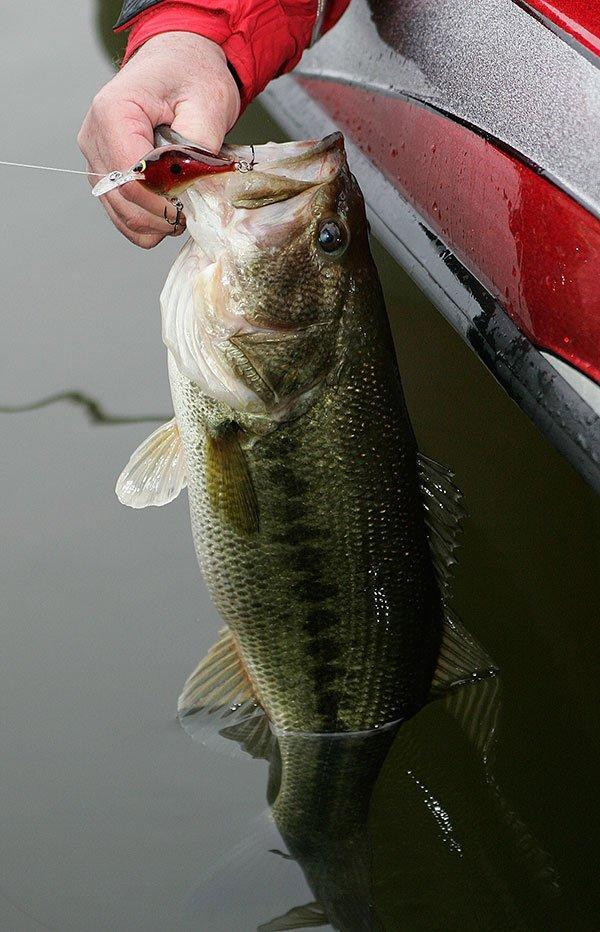Fall is my favorite to be on the water. The cool air, crisp breeze and stellar bass fishing make this time of year a very special one. As the water cools and the shad continue their search for shallower water, a quality crankbait quickly turns into a necessity. While there are several different factors to successful crankbait fishing, such as retrieve cadence, it is most important to use a quality, true-running crankbait.
When the weather begins to cool down, a Rapala DT series (buy here) crankbait is always tied on to one of my cranking rods. I live in the Midwest, and the DT series has the entire water column covered. And, when the bass are pushing pods of bait in the shallows, there is no better bait than one of these balsa beauties.
In order to differentiate my presentation occasionally, I prefer to mix the regular DTs with the Fat and Flat series. If the fish aren’t paying much attention to the original DT series, I will often switch to a DT Flat, as its narrow wiggle can draw strikes in some of the toughest conditions. When I’m targeting any hard cover, such as blowdowns or rocks, the DT Fat‘s aggressive wobble and square lip can entice some enormous strikes. Throughout this time of year, I believe that the bass are always going to eat these crankbaits. While you may have to experiment with different retrieval speeds based on the water clarity, I have caught fish on the DT series in water temperatures as low as 42-degrees.
On a typical fall morning, I tend to start in shallow water, using a DT 6 to target both fallen trees and secondary points. Because locating the fish is not an exact science, I’m a big believer in mixing things up—running a few tree tops and hitting some productive secondary points, alternating until I find large concentrations of bass. Whenever a bass is fooled by one of my DT series, I always make sure to make a mental note of its position, as sun position and water temperature is critical. Fall is a great time for establishing solid patterns, so whenever you can find fish holding on specific structure in a certain water temperature, you can bet to find them in similar areas throughout the lake. Don’t get frustrated if you find a lot of small fish, either—their locations can clue you in to bigger fish that are lurking nearby.
Built with a perfectly consistent balsa wood, the DT 6 never requires tuning. With its perfectly placed weights and the VMC trebles, this is one crankbait that runs true every single time. The DT 6 works wonders through wood and rocks, while remaining super-durable when fished around gnarly cover. The pull point is perfect for fishing steep channel banks as it dives quickly, maintains depth and has a unique side-to-side wobble.
The lip also blends nicely into the body, which allows the bait to pull easily and emit pressure waves that the bass can sense with their lateral lines. Because the 2-inch size weighs 3/8-ounce and dives to 6-feet, I prefer to throw them on a 6-foot, 6-inch St. Croix casting rod. I normally use a reel with a 6.4:1 gear ratio at most, emulating a spinnerbait retrieve whenever possible.
Throughout the fall, I tend to utilize several colors including Regal Shad, Bluegill and Helsinki Shad, but have recently been catching a ton of bass with the Molting Blue Craw and Red Craw colors.
Priced at just $5.99, the Rapala DT Series is a crankbait fisherman’s dream. If you’re in the market for a few next crankbaits this fall, we suggest getting your hands on a few.
To check out the entire Rapala DT Series line, please visit TackleWarehouse.com.














